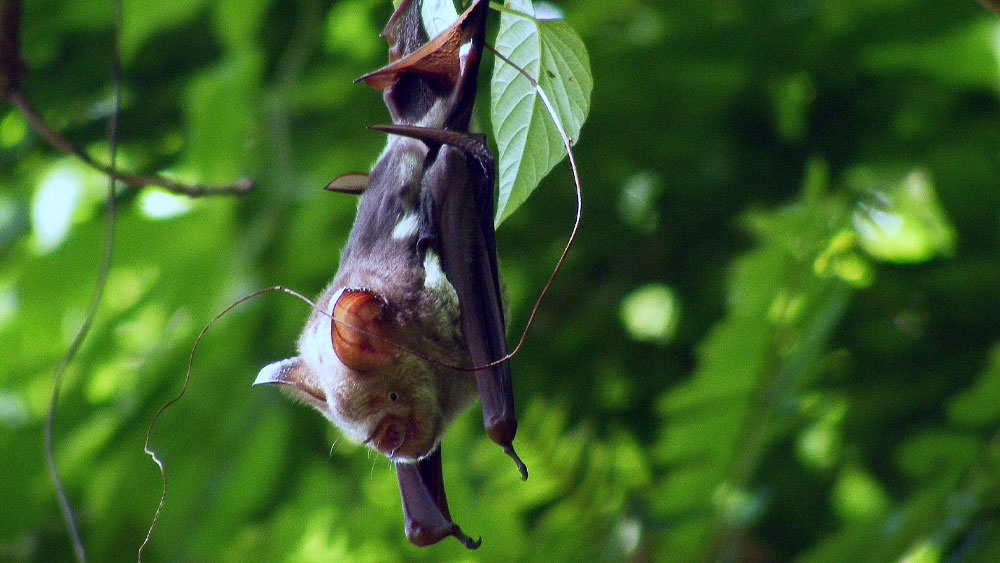As flying mammals, bats continue to amaze zoologists with their incredible abilities.1,2 But their origin continues to be an enigma for conventional biologists because the creatures appear in the fossil record complete, fully formed as bats without evolutionary precursors.
In 2006, evolutionist Karen Sears said, “The earliest known bats appear in the fossil record…[about] 50 million years ago, and they appear suddenly and already possessing the anatomical hallmarks of powered flight.”3 Gunnell and Simmons made a similar comment in their work in the Journal of Mammalian Evolution, saying, “The phylogenetic and geographic origins of bats (Chiroptera) remain unknown.”4
Just a few years ago it was stated that early bats couldn’t echolocate, which is the ability to send out high frequency pulses of sound through the nose and mouth while simultaneously listening for the echo to “see” and navigate the environment.
There are some differences between the oldest bats and their modern relatives. Based upon the ear anatomy of the better-preserved specimens, for example, scientists know that the first bats couldn’t echolocate.5
Three years later, however, four evolutionists described “a new, three-dimensionally preserved fossil bat [Vielasia sigei] recovered from 50-million-year-old limestone cave sediments”6 in France. They reported the fossils are well-preserved with “the oldest uncrushed skull of a bat yet known.” Finding the preserved skull is significant because at “50-million years old,” it “supports an early origin for modern echolocation.”6
They further stated, “Vielasia retains the archaic dentition and skeletal features typical of early Eocene bats, but its inner ear shows specializations found in modern echolocating bats.”6
As always, when it comes to bat origins and their alleged evolution,
...scientists are left with some big questions. For one thing: The 50-million-year-old bat specimens are already recognizable as bats, so where did they come from? When, where, why and how the first bats become airborne is another mystery buried by Deep Time.6
So contrary to what Smithsonian Magazine stated in 2020, it looks like bats were equipped with modern echolocation from the start—as predicted by creationists.
In addition, the cave roosting behaviour of bats was already in place “50 million years ago.” Suzanne Hand stated in Current Biology that,
At least 23 individuals of V. sigei are preserved together in a limestone cave deposit, indicating that cave roosting behavior had evolved in bats by the end of the early Eocene... 6
God created bats as bats, complete with echolocation, just thousands of years ago. Like other creatures, they are able to move in and fill ecological and physical niches such as caves.
Bats in all their complexity make a clear case for creation.
References
- Thomas, B. Dolphin DNA Reflects Bat Echolocation. Creation Science Update. Posted on ICR.org February 25, 2010, accessed November 11, 2023.
- Tomkins, J. Innate Speed-of-Sound Engineering Revealed in Bats. Creation Science Update. Posted on ICR.org June 21, 2021, accessed November 11, 2023.
- Sears, K. et al. 2006. Development of bat flight. Proceedings of the National Academy of Sciences. 103 (17): 6581–6586.
- Gunnell, G. and N. Simmons. 2005. Fossil Evidence and the Origin of Bats. Journal of Mammalian Evolution. 12 (1–2): 209–246.
- Black, R. Why Bats Are One of Evolution’s Greatest Puzzles. Smithsonian Magazine. Posted on smithsonianmag.com April 21, 2020, accessed November 6, 2023.
- Hand, S. et al. 2023. A 50-million-year-old, three-dimensionally preserved bat skull supports an early origin for modern echolocation. Current Biology. 33 (21): 4624–4640.e21.
Stage image: A bat found in Sukawayana Nature Reserve.
Stage image credit: Copyright © Asyief.khasan, 2012. Used in accordance with federal copyright (fair use doctrine) law. Usage by ICR does not imply endorsement of copyright holder.
* Dr. Sherwin is science news writer at the Institute for Creation Research. He earned an M.A. in zoology from the University of Northern Colorado and received an Honorary Doctorate of Science from Pensacola Christian College.



















